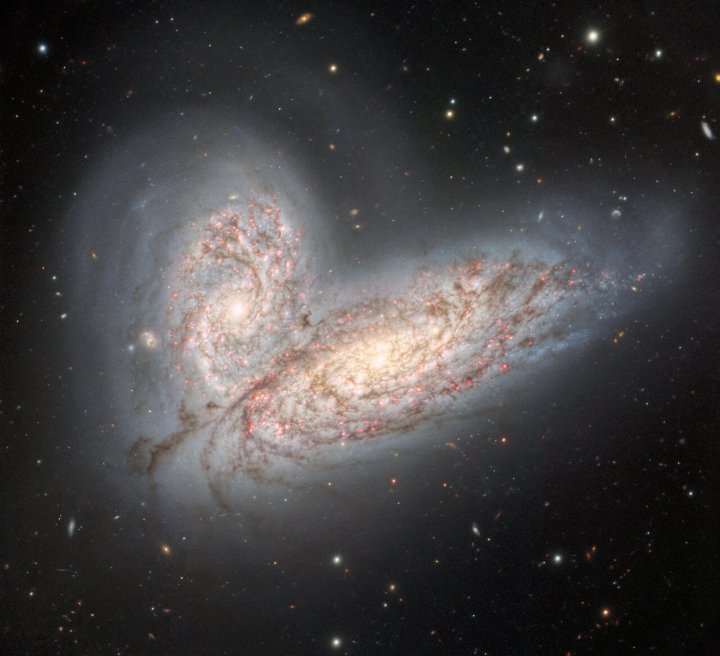Hard as it is to imagine, out in the depths of space entire galaxies can collide. Galactic collisions can be sites of not only destruction but creation, as the two interacting galaxies can create pockets of intense star formation as they merge. The slow process of merging can happen over millions of years, meaning that astronomers can spot these mergers as they happen.
One such merger has been captured by NOIRLab’s Gemini North telescope in Hawaii, showing the two galaxies NGC 4568 and NGC 4567 in the dramatic process of colliding and merging. The two are currently just 20,000 light-years apart, and they are poised to enter a destructive phase of merging.

The two galaxies are located 60 million light-years away, toward the constellation of Virgo, and both are spiral galaxies like our Milky Way. However, as they get closer and closer the enormous gravitational forces involved in the merger will begin to distort their shapes, stretching out parts while triggering bursts of star formation in certain pockets.
“As NGC 4568 and NGC 4567 draw together and coalesce, their dueling gravitational forces will trigger bursts of intense stellar formation and wildly distort their once-majestic structures,” NOIRLab writes. “Over millions of years, the galaxies will repeatedly swing past each other in ever-tightening loops, drawing out long streamers of stars and gas until their individual structures are so thoroughly mixed that a single, essentially spherical, galaxy emerges from the chaos. By that point, much of the gas and dust (the fuel for star formation) in this system will have been used up or blown away.”
Just to add to the existential horror aspect of this image, NOIRLab also points out that this is similar to what will eventually happen to the Milky Way when the nearby Andromeda galaxy collides with our home galaxy in around 4 billion years’ time.



